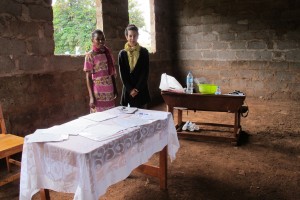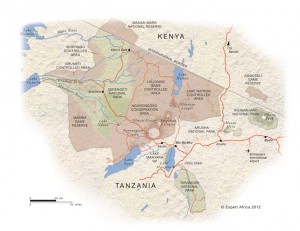After a long, hard week with lots of peaks and valleys, it is finally Saturday. I will share the Friday afternoon story in a moment, but I just woke up after sleeping 10 hours. I went to bed at 10pm and got up at 8am, but was falling asleep on the couch as we watched some TV shows Sarah had. We have been getting up between 5:30-6:30am and working at the school from 8-3 and then going and doing work on our computers and then organizing assessment sheets in the evening. Today we are going to see a friend of Sarah’s who lives in Dar is coming to Arusha on her way to a safari. Tomorrow, we have lunch, or dinner as my Iowa family calls it, at a family Sarah knows well, because she taught the student in kindergarten when she first came to Tanzania. He is know a student at the primary school we are at and we see him everyday.
On Friday afternoon, we went to look at another car (Sarah is trying to buy a car for her work here, but we are currently using a car borrowed from a friend) and met with Baba Ngowi, Sarah’s Tanzanian father to talk about some business things like a letter from the district education office the headmaster asked for. I also had a problem with my modem, because I was trying to be preventative and that is not the right attitude. So, when I got the modem, you get three days free unlimited internet. Not being sure if it was three business days or 72 hours, I went and put a new bundle on it to cover me after. Two problems happened. First, you can’t be preventative. You can’t have overlapping bundles. So after I did that, the “bundle” started being applied on Wednesday afternoon, not my free time. Second, the lovely gentleman at the stationary store did it wrong and put it on as just 20,0000 shillings of a voucher for internet. As a per MB rate, I went through that quickly, because I thought I was doing free stuff and trying to download a few things. Anyway, I used my voucher for 20,000 quickly and when we discovered the problem there was sill nothing to be done. So, the lesson is always go to Zantel and not a stationary store and that we can add a new bundle toward the end of the month to prevent having a modem that doesn’t work, which is what happened to me on Thursday. I was skyping with a friend and we were basically done, but then it just failed and I know now that it is because I had no credit or bundle.
As you can read from the blog, things are going well at school and it is great and amazing data. I excited to write more in depth about what we are seeing. On thing we want to do now is have an in-depth conversation about expectations on many levels and about beliefs and thoughts on disabilities and children in the classroom with disabilities with the classroom teacher. I am compiling data to look at the mean, median and mode percentage of correct answers on the assessment and at sections and individual questions that were difficult or impossible for most or all students. This assessment is based off of all the sections in the standard 1 syllabus or curriculum for these students and what the Tanzanian government says they should be able to do at the end of standard 1. But, we already threw out some sections I had included and questions, because we know that they have not studied it or it was just not the most important thing to know to determine was kinds of challenges some children are facing. For example, I am interested to see if the children who are having trouble with reading or math are able to answer other more practical questions from the science curriculum or demonstrate certain executive functions skills that help to differentiate more between learning disabilities and intellectual disabilities. Because we do not have the diagnostic assessments to compare cognitive and academic achievement, we are actually looking at how we can employ the newer system in the US, RTI or response to intervention. I am starting to think about interventions we can consider and then assess the students again after time and that will also be a real indicator.
But, I clearly remember talking with my dear friend and colleague Rama, about her work in India and children with autism and how when they talked to parents, they often didn’t use the word “autism,” but talk about strengths and challenges and things the family and school could do. Labeling is not critical and figuring out what their challenge or potential disability is not the goal, but rather to find ways to help the children to succeed in this situation. That is the real goal and huge challenge.
After we finish the assessment, we will look at the children seem to be experiencing the most challenges in school as determined through the assessment and Sarah and Veronica’s extensive observation period. We will then have a meeting with each family and talk about our concerns based on the data, and refer them to various specialists in the area for additional assessment. We are going to work with places here that provide free or cheap services for various health issues and disabilities.
I do not promise a daily blog next week, but I wanted to write out my thoughts. I will keep this as part of my research as I worked out some ideas in my head as I was writing. Happy reading!











